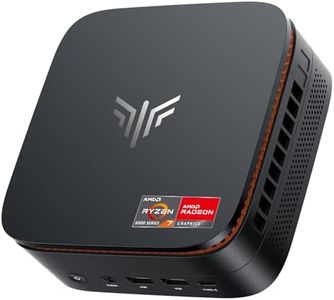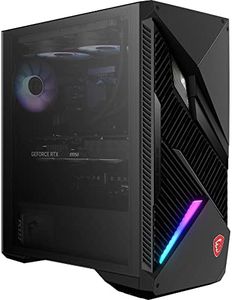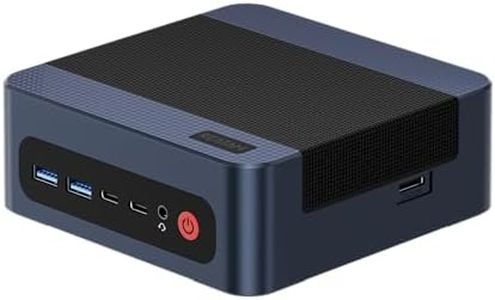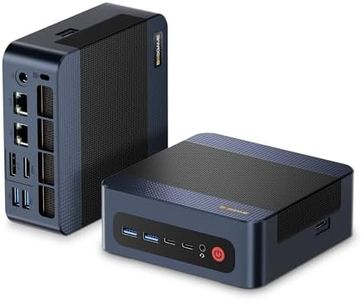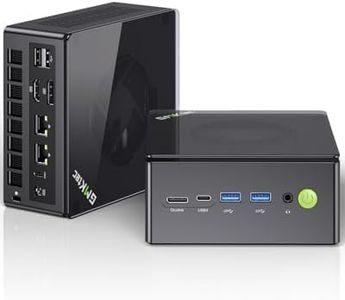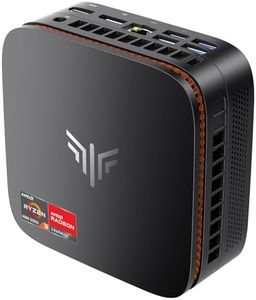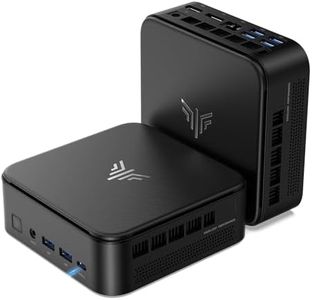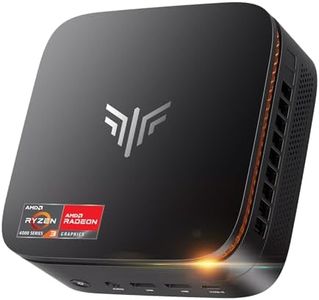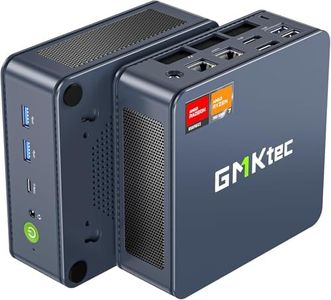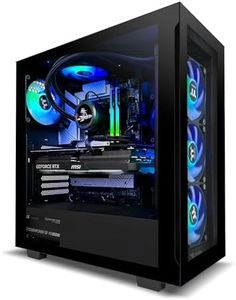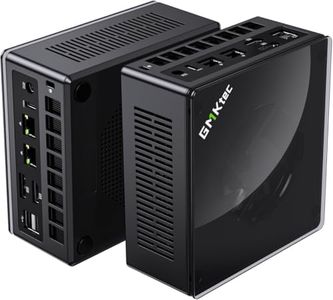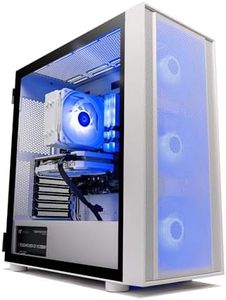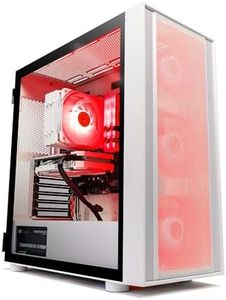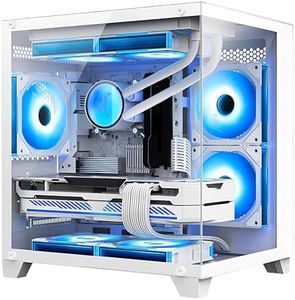We Use CookiesWe use cookies to enhance the security, performance,
functionality and for analytical and promotional activities. By continuing to browse this site you
are agreeing to our privacy policy
10 Best Gaming Desktops
From leading brands and best sellers available on the web.Buying Guide for the Best Gaming Desktops
Choosing a gaming desktop can feel overwhelming due to the wide variety of options available. To find the best fit for you, it's important to know what games you want to play and at what quality settings, as well as any other activities you plan to do on your computer. By understanding the main components and how they affect performance, you can make an educated decision that matches your gaming goals and makes your purchase feel worthwhile.Graphics Card (GPU)The graphics card is the component that has the biggest impact on gaming performance. It processes the visuals and determines how smoothly and beautifully games are displayed. Graphics cards range from entry-level to high-end. If you mostly play less demanding or older games, an entry-level GPU will suffice. For popular modern games at high settings, consider a mid-range card. For ultra settings, high resolutions, or virtual reality, a top-tier GPU is best. Think about the games you want to play and what graphics quality matters to you, then match the GPU to those needs.
Processor (CPU)The processor handles all the general tasks and calculations in your computer, including aspects of gaming like physics, AI, and background processes. Entry-level CPUs can handle everyday tasks and less demanding games, while mid-range CPUs are good for most modern games and multitasking. High-end CPUs are best for streaming, running intensive applications, or playing cutting-edge games. If you plan to multitask with your gaming or use your desktop for creative work, prioritize a stronger CPU.
RAM (Memory)RAM temporarily stores the data that your system and applications are currently using, making lots of RAM helpful for running several programs at once or large, modern games. 8GB is the minimum for smooth gaming, but 16GB is now the sweet spot for most users, offering future-proofing and smoother multitasking. Higher (32GB or more) is mainly useful if you stream, create content, or run heavy programs alongside your games.
Storage (HDD/SSD)Storage determines how much you can keep on your desktop, such as games, media, and files. SSDs are much faster than traditional hard drives (HDDs), which means games and programs load more quickly and the system feels more responsive. For a better gaming experience, it’s recommended to have an SSD for your operating system and favorite games, while using a larger HDD for files and less-important applications. If fast loading and smooth performance matter to you, prioritize a larger SSD.
Cooling SystemGaming desktops generate a lot of heat, especially during intense gaming sessions. The cooling system helps keep temperatures low, ensuring stable performance and extending the life of your components. Some systems use air cooling, while others use liquid cooling for better heat management. If you plan on gaming for long periods, playing graphics-heavy games, or overclocking, look for robust cooling solutions. For light gaming, standard air cooling is generally sufficient.
UpgradabilityUpgradability refers to how easy it is to replace or add parts inside the desktop in the future. Some gaming desktops are easy to open and have plenty of space and slots for new components, while others are more limited. If you think you'll want to extend your desktop's life by upgrading parts like the GPU, RAM, or storage, choose a desktop with a spacious case and good access to components. This allows for more flexibility and cost savings over time.
Connectivity (Ports and Networking)Connectivity includes the number and types of ports (like USB, HDMI, DisplayPort, audio jacks) and network options (Wi-Fi, Ethernet). Having enough of the right ports ensures you can plug in all your gaming accessories, monitor(s), and other devices. If you have many peripherals or want to connect multiple displays, look for desktops with plenty of accessible ports. Strong networking options are important for stable online gaming, so consider systems with fast and reliable Wi-Fi or Ethernet.
